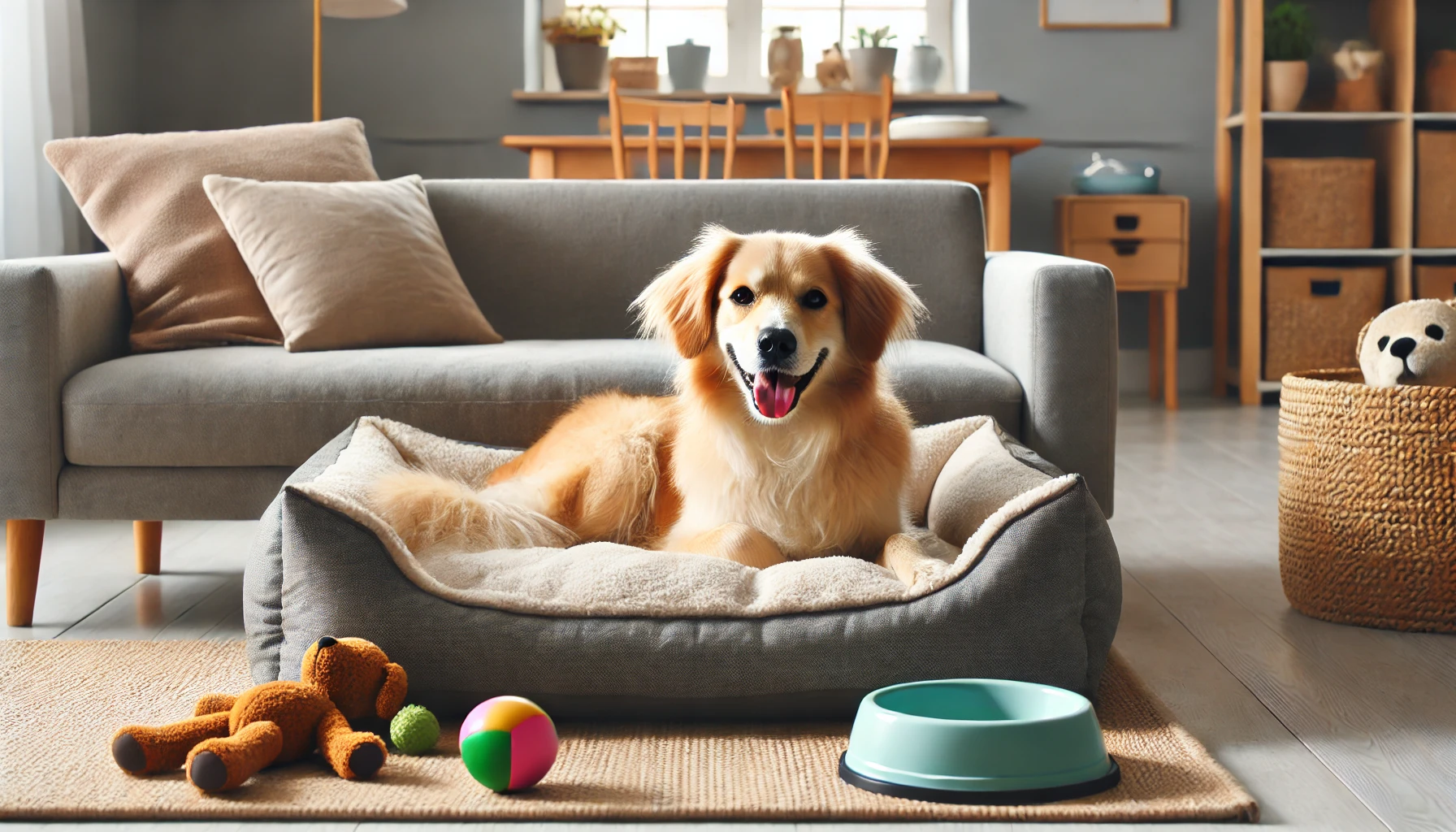Just like humans, dogs need a comfortable and safe place to rest and recharge. Providing your dog with a proper bed and a calm resting environment is essential for their physical health, emotional well-being, and quality of sleep. Whether you have a playful puppy, a calm senior, or a high-energy adult dog, choosing the right bed and setting up the ideal spot can make a big difference in your pet’s daily life.
In this article, we’ll explore how to choose the perfect bed for your dog and how to create a cozy, practical space where your furry friend can relax and feel secure.
1. Why Having a Designated Resting Area Is Important
Your dog’s resting spot is more than just a bed—it’s a safe space, a place where they can relax, feel secure, and recover from the excitement of the day. Dogs need a place to retreat when they feel tired, overwhelmed, or simply want some quiet time.
Benefits of a proper resting area include:





Whether it’s a quiet corner of your living room or a crate with a comfy pad, creating a defined resting area can have a positive impact on your dog’s behavior and well-being.
2. Choosing the Right Type of Dog Bed
Dog beds come in all shapes, sizes, and materials. The best choice depends on your dog’s age, size, breed, health condition, and preferences.
A. Orthopedic Beds
Best for senior dogs or dogs with arthritis/joint pain. These beds are made with memory foam or dense supportive materials that reduce pressure on the joints.


B. Bolster Beds
These beds have raised sides or edges, offering a sense of security. Dogs that like to curl up or lean against something while they sleep often love these.


C. Flat or Pillow Beds
These are basic, flat mats or large cushions that offer a soft place to lie down. They’re often lightweight and easy to move.


D. Donut or Nest Beds
Circular beds with a soft center and raised edges. These beds are designed to mimic a nest, making them a popular choice for puppies and small breeds.


E. Elevated Beds
These beds are raised off the floor and usually have a mesh or fabric surface that allows airflow.


3. Sizing the Bed Properly
A bed that’s too small won’t allow your dog to stretch out comfortably, while one that’s too big may feel less cozy—especially for puppies and small breeds.



4. Where Should Your Dog Sleep? Choosing the Ideal Spot
The bed itself is only part of the equation—location matters too. Dogs are social animals but also need quiet and privacy to rest.





5. Bed Materials and Maintenance
Comfort is important, but so is durability and ease of cleaning—especially if your dog sheds a lot or has accidents.




Tip: Wash the bed regularly to prevent odors and reduce allergens like dander, especially if your dog has sensitive skin.
6. Seasonal Adjustments for Comfort
Just like humans, dogs may prefer different sleeping conditions based on the season.



Adapting their space with the seasons ensures your dog stays comfortable all year round.
7. Considerations for Puppies and Senior Dogs
Different life stages require different bed and location choices.
For Puppies:



For Senior Dogs:



8. Travel and Secondary Beds
If your dog travels with you or likes to follow you around the house, consider getting secondary beds in different rooms.



Final Thoughts
Choosing the right bed and resting space for your dog is about more than comfort—it’s about respecting their needs, providing security, and showing love through thoughtful care. A well-rested dog is a healthier, calmer, and happier dog, and with the right setup, you’ll give your furry friend a peaceful place they can truly call their own.




With a cozy bed in a peaceful space, your dog will rest better—and so will you, knowing they’re comfortable, safe, and deeply loved.
